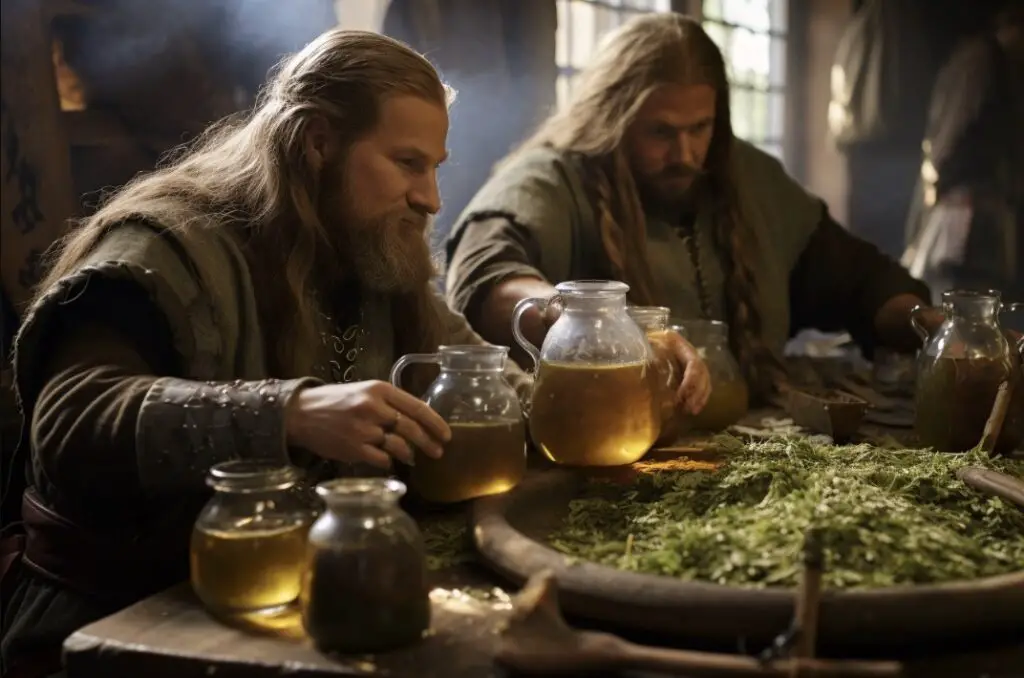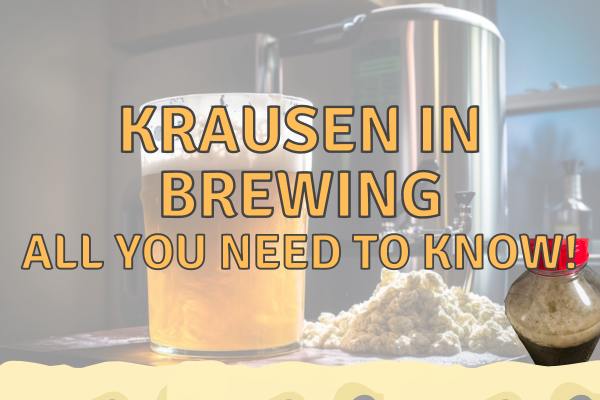Yes, mead is, by many, considered to be the the oldest alcoholic beverage known to man.
Made from fermented honey, water, and sometimes fruits, spices, grains or hops, mead has been traced back almost 9,000 years to China and Northern Europe.
Its rich history and unique taste make it a fascinating subject for both enthusiasts and first-time tasters.
As a seasoned brewer, I have had the pleasure of experimenting with this beverage, and I’m excited to share my experiences and knowledge with you.
The Ancient History of Mead
Mead dates back to the Neolithic period, making it one of the oldest known alcoholic beverages. Archaeologists have found pottery shards in China that contained residue of a fermented drink made of honey, rice, and fruits, dating back to around 7000 BC.

Similarly, evidence of mead has been found in Europe dating back to the Bronze Age.
The Role of Mead in Ancient Cultures
Mead held a significant role in many ancient cultures. In Norse mythology, it was considered the drink of the gods, believed to bestow wisdom and poetic inspiration. This sacred status was not exclusive to the Norse; in ancient Greece, mead was often offered to the gods in religious ceremonies. In Africa, it was used in traditional celebrations and rites of passage, a tradition that continues today.
The Brewing Process of Mead
The brewing process of mead is relatively simple, but it requires patience. The basic ingredients are honey, water, and yeast.

The honey and water are mixed together to create a must, which is then fermented by the yeast. This process can take anywhere from a few weeks to several months, depending on the desired sweetness and alcohol content.
Varieties of Mead
The varieties of mead can be quite diverse and are often categorized based on the ingredients used and the brewing techniques applied.
Mead is incredibly versatile, with countless variations. The type of honey used can greatly influence the taste, as can additional ingredients such as fruits, spices, and grains.

Some popular varieties of mead include melomel (fruit mead), metheglin (spiced mead), and braggot (mead-beer hybrid).
- Traditional Mead: Also known as “plain” or “pure” mead, this type is made using just honey, water, and yeast. It showcases the natural flavors and aromas of honey without any additional ingredients.
- Melomel: This type of mead includes the addition of fruits such as berries, cherries, peaches, or apples. The fruit adds both flavor and sweetness to the mead.
- Pyment: Pyment is made by blending honey with grape juice or crushed grapes. The result is a mead with characteristics of both wine and mead, often exhibiting the flavors of the chosen grapes.
- Cyser: Cyser is a blend of mead and apple juice or apple cider. The apple component can range from subtle to dominant, influencing the overall flavor profile.
- Metheglin: Metheglin is mead that is flavored with spices and herbs. Common additions include cinnamon, cloves, nutmeg, and ginger. The flavors can vary widely based on the chosen spices.
- Braggot: Braggot is a combination of mead and beer, where malted grains are used in addition to honey. This results in a beverage that has characteristics of both beer and mead.
- Bochet: Bochet mead is made by caramelizing the honey before fermentation. This gives the mead a rich, toasty, and sometimes even smoky flavor.
- Acerglyn: Acerglyn is a mead that’s made with maple syrup in addition to honey. The maple syrup contributes its distinctive flavor to the final product.
- Rhodomel: Rhodomel includes the addition of rose petals or rose hips. This can lend floral and sometimes slightly tangy notes to the mead.
- Capsicumel: Capsicumel is mead that’s flavored with chili peppers or other hot peppers. This variety can range from mildly spicy to intensely hot, depending on the type and amount of peppers used.
- Mead with Additional Flavors: Mead makers often experiment with a wide range of additional ingredients such as nuts, vanilla, coffee, chocolate, and more to create unique and innovative flavors.
These are just a few examples of the many varieties of mead that can be created through various combinations of honey, water, fruits, spices, and other flavorings. Mead-making is a versatile and creative process, and the possibilities for unique flavors are virtually endless.
The Resurgence of Mead
In recent years, mead has seen a resurgence in popularity. This renewed interest is likely due to the craft brewing movement, which has seen a rise in small-scale breweries and a focus on unique and traditional brews. Mead fits perfectly into this trend, offering a wide range of flavors and styles.

Mead in Modern Culture
Mead has also found its way into modern culture, often featured in fantasy books and TV shows. Fans of the popular series “Game of Thrones” will be familiar with the characters’ frequent toasting with horns of mead. This cultural presence has undoubtedly contributed to its renewed popularity.
Conclusion: Mead, an Ancient Beverage for the Modern Palate
Mead, as the oldest known alcoholic beverage, offers a unique taste of history. From its ancient origins to its modern resurgence, it has captivated people with its rich flavors and cultural significance.
As a brewer, I have found great joy in experimenting with this versatile drink, and I encourage all who are curious to give it a try.
Top 10 Facts about Mead:
1. Mead is considered the oldest known alcoholic beverage, with evidence of its existence tracing back to 7000 BC.
2. The basic ingredients of mead are honey, water, and yeast.
3. Mead played a significant role in many ancient cultures, often considered a sacred drink of the gods.
4. The brewing process of mead can take anywhere from a few weeks to several months.
5. There are countless varieties of mead, influenced by the type of honey and additional ingredients used.
6. The craft brewing movement has played a large role in the resurgence of mead.
7. Mead is often featured in fantasy books and TV shows, contributing to its modern popularity.
8. Some popular varieties of mead include melomel, metheglin, and braggot.
9. The taste of mead can range from sweet to dry, depending on the brewing process.
10. Despite its ancient origins, mead is a versatile and modern drink that can be enjoyed in a variety of ways.
From my personal experience as a brewer, I can vouch for the intriguing allure of mead. Its ancient origins and simple ingredients provide a rich tapestry of taste that is endlessly fascinating. Whether you’re a seasoned connoisseur or a curious novice, mead offers an adventure in every sip.
FAQs
Why did gods drink mead?
Gods drank mead because it was believed to grant them immortality, strength, and wisdom.
How old is mead alcohol?
Mead alcohol is one of the oldest known alcoholic beverages, dating back thousands of years.
Did the gods drink mead?
Yes, in Norse mythology, the gods were known to drink mead.
Why don t people drink mead anymore?
People don’t drink mead as much anymore because it has gradually fallen out of popularity over time. As other alcoholic beverages like beer, wine, and spirits gained popularity, mead lost its prominence. Additionally, the complex and time-consuming process of making mead contributed to its decline. The taste preferences of people have also evolved, and mead’s distinct flavor may not appeal to everyone.
Why is mead the drink of the gods?
Mead is often referred to as the drink of the gods due to its ancient origins and its association with mythology and divine beings. In many ancient cultures, mead was considered a sacred beverage and was believed to possess mystical and transformative properties. It was often associated with gods and goddesses, who were believed to consume mead to gain immortality, wisdom, and strength. The rich history and mythical connections surrounding mead have contributed to its reputation as a divine drink.
What is the purpose of mead?
The purpose of mead is to be a delicious and intoxicating alcoholic beverage made from fermented honey. It has been enjoyed by humans for centuries as a traditional drink, often associated with celebrations and special occasions.




